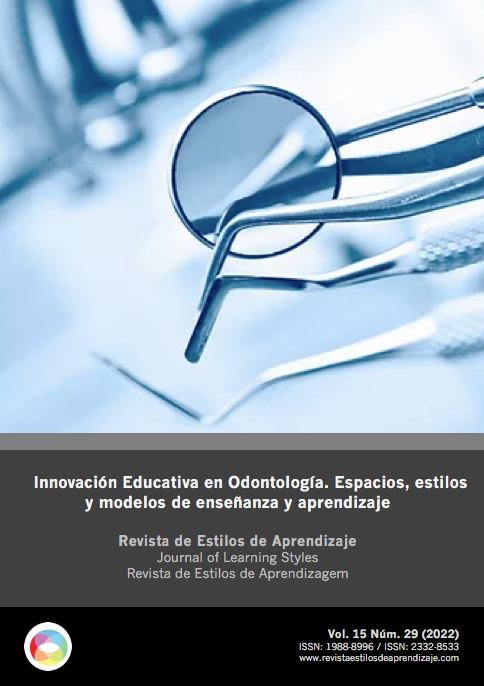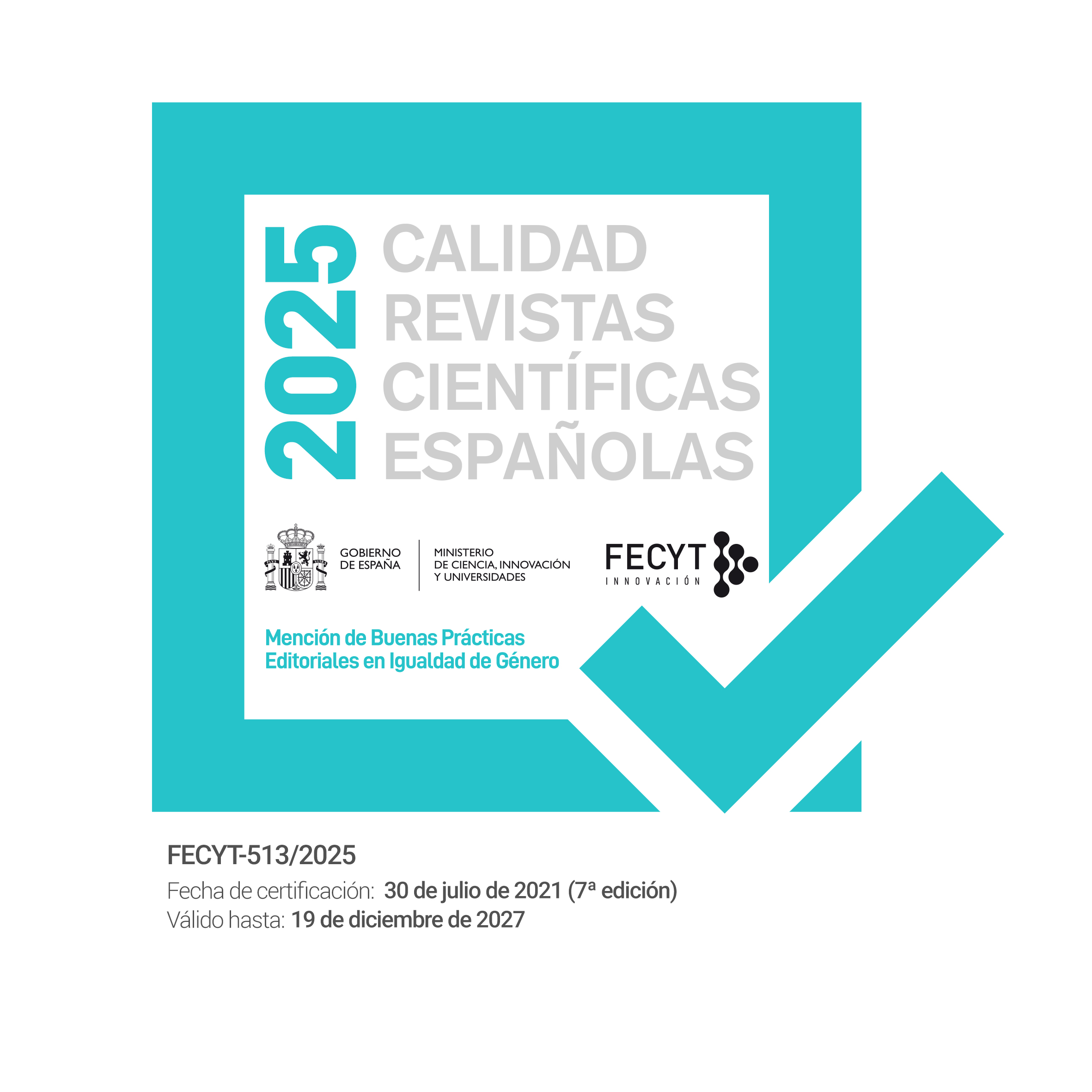An experience with university students: Flipped Classroom Methodology
DOI:
https://doi.org/10.55777/rea.v15i29.4175Keywords:
Didactics, Competences, Educational cooperation, Learning, QualityAbstract
He develops an experience based on the Flipped Classroom system with 110 undergraduate students. Their opinions, perceptions and assessment of their satisfaction with this method, in comparison with the traditional system, are collected. The aim is to study in depth new teaching methodologies that favour university student learning and to compare their advantages in relation to the traditional method. The central idea is to contribute to the results of the application of an Inverted Classroom (IA) model in some university subjects. The method demonstrates its usefulness in essential aspects of the model such as the optimised use of class time, the development of higher order thinking skills and competences and the improvement of inter-student and student-faculty communication. The results corroborate student satisfaction with the method itself and in comparison to traditional teaching. In order to increase the effectiveness of learning, key aspects are identified such as working on the educational culture promoting the benefits of IL, it is recommended to deepen the materials that are more attractive to students, in order to minimise the perception of effort required. It is suggested as a future line of work to extend the experience to other degrees.
Downloads
References
Abeysekera, L. y Dawson, P. (2015). Motivation and cognitive load in the flipped classroom: definition, rationale and a call for research. Higher Education Research y Development, 34 (1), 1-14. https://doi.org/10.1080/07294360.2014.934336.
Angelini, M.L. y García-Carbonell, A. (2015). Percepciones sobre la integración de modelos pedagógicos en la formación del profesorado: la simulación y juego y el Flipped Classroom. Education in The Knowledge Society EKS, 16 (2), 16-30. http://dx.doi.org/10.14201/eks20151621630.
Arnold-Garza, S. (2014). The fliped Classroom teaching model and its use for information literacy instruction. Communications in Information Literacy, 8 (1), 7-22. https://files.eric.ed.gov/fulltext/EJ1089137.pdf
Baarda, B., y van Dijkum, C. (2019). Introduction to Statistics with SPSS. Routledge.
Baepler, P., Walker, J. D., y Driessen, M. (2014). It's not about seat time: Blending, flipping, and efficiency in active learning classrooms. Computers y Education, 78, 227-236. https://doi.org/10.1016/j.compedu.2014.06.006
Benavides León, C. A., y López Rodríguez, N. M. (2020). Retos contemporáneos para la formación permanente del profesorado universitario. Educación y Educadores, 23 (1), 71-88. https://doi.org/10.5294/edu.2020.23.1.4
Berenguer-Albaladejo, C. (2016). Acerca de la utilidad del aula invertida o flipped classroom. [About the usefulness of the flipped classroom]. University of Alicante, Instituto de Ciencias de la Educación. http://hdl.handle.net/10045/59358
Bergmann, J. y Sams, A. (2012). Flip your classroom: Reach every student in every classevery day.Washington, DC. Internal Society for Technology in Education. https://bit.ly/3qv219D
Bergmann, J., y Sams, A. (2012). Flip your classroom: Reach every student in every class every day. International society for technology in education. ISTE-ASCD.
Bishop, J. L., y Verleger, M. A. (2013, June). The flipped classroom: A survey of the research. In ASEE national conference proceedings, Atlanta, GA 30 (9), 1-18. https://peer.asee.org/22585
Churches, A. (2009). Taxonomía de Bloom para la era digital [Bloom’s taxonomy for the digital age]. Eduteka. http://edorigami.wikispaces.com
Cole, J.E. y Kritzer, J.B. (2009). Strategies for Success: Teaching an Online Course. Rural Special Education Quarterly, 28 (4), 36-40. https://bit.ly/3qxb8Xr
Conklin, J. (2005). Book Review: A taxonomy for learning, teaching, and assessing: A revision of Bloom’s taxonomy of educational objectives complete edition. Educational Horizons, 83 (3), 154-159. http://www.jstor.org/stable/42926529
Crouch, C. H., y Mazur, E. (2001). Peer instruction: Ten years of experience and results. American journal of physics, 69 (9), 970-977. https://doi.org/10.1119/1.1374249
Cukurbasi, B. y Kiyici, M. (2018). High School Students' Views on the PBL Activities Supported via Flipped Classroom and LEGO Practices. Educational Technology y Society, 21 (2), 46-61. https: //www.jstor.org /stable /26388378
Esteban Rivera, E.R., Cámara Acero, A.A. (2020). La educación virtual de posgrado en tiempos de COVID-19. Transformación e innovación educativa durante la crisis del COVID-19. Estilos y modelos de enseñanza y aprendizaje. Vol. 13 Núm. Especial (2020), 82-94. http://revistaestilosdeaprendizaje.com/article/view/2241/3243
Estes, M.D., Ingram, R. y Liu, J. C. (2014). A review of Flipped Classroom research, practice, and technologies. International HETL Review 4 (7). https://bit.ly/3z92S3L
Gannod, G. C., Burge, J. E., y Helmick, M. T. (2008). Proceedings of the 30th International Conference on Software Engineering: Using the inverted classroom to teach software engineering. ACM. https://doi.org/10.1145/1368088.1368198
García-Gil, D. y Cremades-Andreu, R. (2019). Flipped Classroom en educación superior. Un estudio a través de relatos de alumnos. RMIE, 24 (80), 101-123. https://bit.ly/32LuLmw
García-Rodríguez, Y., Morales-Calvo, S., Rodríguez-Martín, V. (2020). Abordaje de experiencias educativas digitales ante la crisis del COVID-19 en el contexto universitario con el alumnado de diversidad funcional. Transformación e innovación educativa durante la crisis del COVID-19. Estilos y modelos de enseñanza y aprendizaje. Vol. 13 Núm. Especial (2020), 32-42.http://revistaestilosdeaprendizaje.com/article/view/2235/3235
González-Zamar, M.D. y Abad-Segura, E. (2020). Flipped Classroom: a challenge to university education. Virtualidad Educación y Ciencia, 11 (20), 75-91. https://bit.ly/3FSFwSN
Hidalgo, M. E. (2021). Reflexiones acerca de la evaluación formativa en el contexto universitario. Revista Internacional De Pedagogía E Innovación Educativa, 1 (1), 189-210. https://doi.org/10.51660/ripie.v1i1.32
JASP. (2018). A New Manual for JASP - JASP - Free and User-Friendly Statistical Software. https://jasp-stats.org/2018/09/13/a-new-manual-for-jasp/
Kaplan, D. (2009). Structural equation modeling: foundations and extensions. Segunda edición. Thousand Oaks, CA: Sage. https://doi.org/doi:10.4135/9781452226576.
Lage, M.J., Platt, G.J. y Treglia, M. (2000). Inverting the Classroom: A Gateway to Creating an Inclusive Learning Environment. The Journal of Economic Education, 31 (1), 30-43. https://doi.org/10.1080/00220480009596759.
Lakmal, A. y Dawson, P. (2015). Motivation and cognitive load in the Flipped Classroom: definition, rationale and a call for research. Higher Education Research and Development, 34 (1), 1–14. https://acortar.link/nSeSlj
Mason, G.S., Shuman, T.R. y Cook, K.E. (2013). Comparing the effectiveness of an inverted classroom to a traditional classroom in an upper-division engineering course.IEEE Transactions on Education, 56 (4), 430-435. https://doi.org/10.1109/TE.2013.2249066
McCallum, S., Schultz, J., Sellke, K., y Spartz, J. (2015). An examination of the flipped classroom approach on college student academic involvement. International Journal of Teaching and Learning in Higher Education, 27 (1), 42-55. https://eric.ed.gov/?id=EJ1069793
McLaughlin, J. E., Roth, M. T., Glatt, D. M., Gharkholonarehe, N., Davidson, C. A., Griffin, L. M. y Mumper, R. J. (2014). The flipped classroom: a course redesign to foster learning and engagement in a health professions school. Academic medicine, 89 (2), 236-243. doi: 10.1097 / ACM.0000000000000086
Min-Kyung, L. (2018). Flipped Classroom as an alternative future class model? implications of South Korea´s social experiment. Education Tech Research Dev, 66, 837-857. https://doi.org/10.1007/s11423-018-9587-9
Mok, H. N. (2014). Teaching tip: The flipped classroom. Journal of information systems education, 25 (1), 7-11. https://bit.ly/32zOXYL
Ng, E. M. (2018). Integrating self-regulation principles with flipped classroom pedagogy for first year university students. Computers y Education, 126, 65-74. https://doi.org/10.1016/j.compedu.2018.07.002
Overmyer, J. (2012, September). Flipped classrooms 101. Principal. https://bit.ly/3HoNjYP
Salcines-Talledo, I., Cifrián, E., González-Fernández, N. y Viguri, J.R. (2020). Estudio de caso sobre las percepciones de los estudiantes respecto al modelo Flipped Classroom en asignaturas de ingeniería. Diseño e implementación de un cuestionario. Revista Complutense de Educación, 31 (1), 25-34. doi: 10.5209/rced.61739
Sosa-Díaz, M.J. y Palau-Martín, R.F. (2018). Flipped Classroom para adquirir la competencia digital docente: una experiencia didáctica en la educación superior. Revista de Medios y Educación (52), 37-54. http://hdl.handle.net/11162/148972
Staker, H., y Horn, M. B. (2012). Classifying K–12 blended learning. p. 37-54. https://bit.ly/3z979El.
Urbano, L., Terán, H., Gómez, F., Solarte, M., Sepulveda, C., y Meza, J. (2020). Bibliographic Review of the Flipped Classroom Model in High School: A Look from the Technological Tools. Journal of Information Technology Education: Research, 19 (1), 451-474. https://www.learntechlib.org/p/217550/
Zamzami, Z. y Siti, H.H. (2016). Flipped Classroom Research and Trends from different fields of study. International Review of Research in open and Distributed Learning, 17 (3), 313-340. https://doi.org/10.19173/irrodl.v17i3.2274
Downloads
Published
How to Cite
Issue
Section
License
By submitting the original, the author(s) declare that they are aware of and accept, in full, the privacy policy as well as the copyright of the Learning Styles Magazine.
The Learning Styles Magazine offers free and open access to its content, completely free of charge, in order to bring scientific research to its readers and society in general. All digital contents are free and open access and are published under a Creative Commons license:

Rights are granted under the Creative Commons Reconocimiento-NoComercial-SinObraDerivada 4.0 Internacional (CC-BY-NC-ND 4.0)
The Learning Styles Magazine is an open access journal. Publication of articles or reviews in the Journal does not entitle you to any remuneration. For authors as well as readers, the journal is free Creative Commons Reconocimiento-NoComercial-SinObraDerivada 4.0 Internacional (CC-BY-NC-ND 4.0).
With this licence, the reproduction and dissemination of the contents of the magazine for educational, social and knowledge transmission purposes is permitted, without any profit motive in mind, provided that the source and authorship are not modified. The licence granted to Learning Styles Magazine allows the copying and distribution of the magazine's contents, as long as the authorship of the work is recognised, correctly specifying the author and the publishing entity. The work may not be used for commercial purposes, nor may it be altered, transformed or generated from this work.
The publication of articles or reviews in the Journal does not give the right to any remuneration.
The Learning Styles Journal invites the author/authors to increase the visibility and scope of their articles published by re-disseminating them in:
- Web spaces and personal networks, as well as in scientific meetings and forums
- Open institutional archives in Universities, educational repositories and Research Centres.
- Academic and scientific networks (Researchgate, Academia.edu, Plubons, etc.)
All these spaces and publications must include all the bibliographic data of the publication.

























